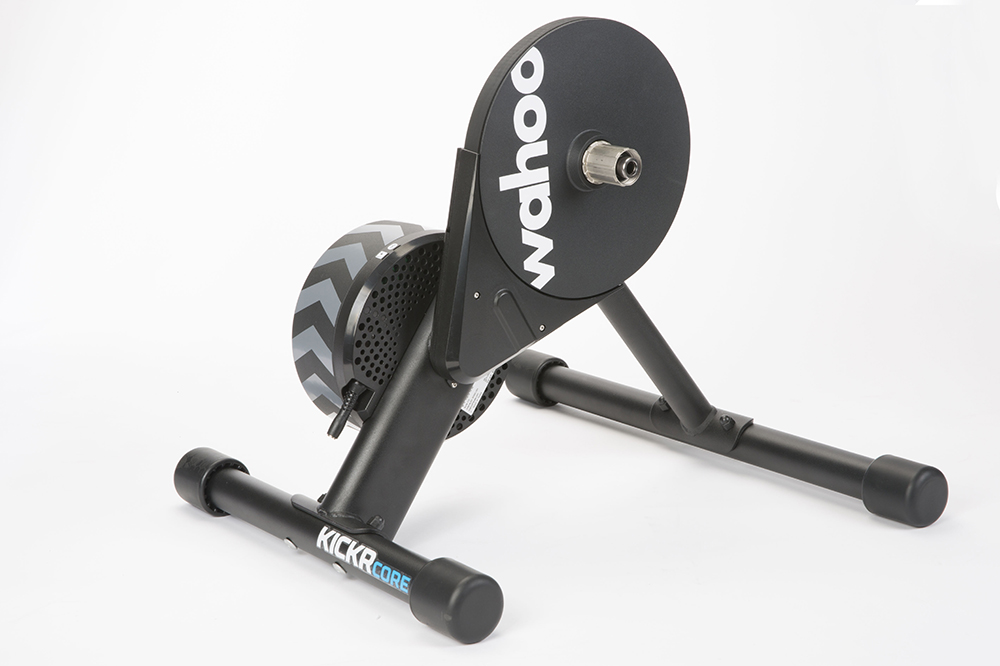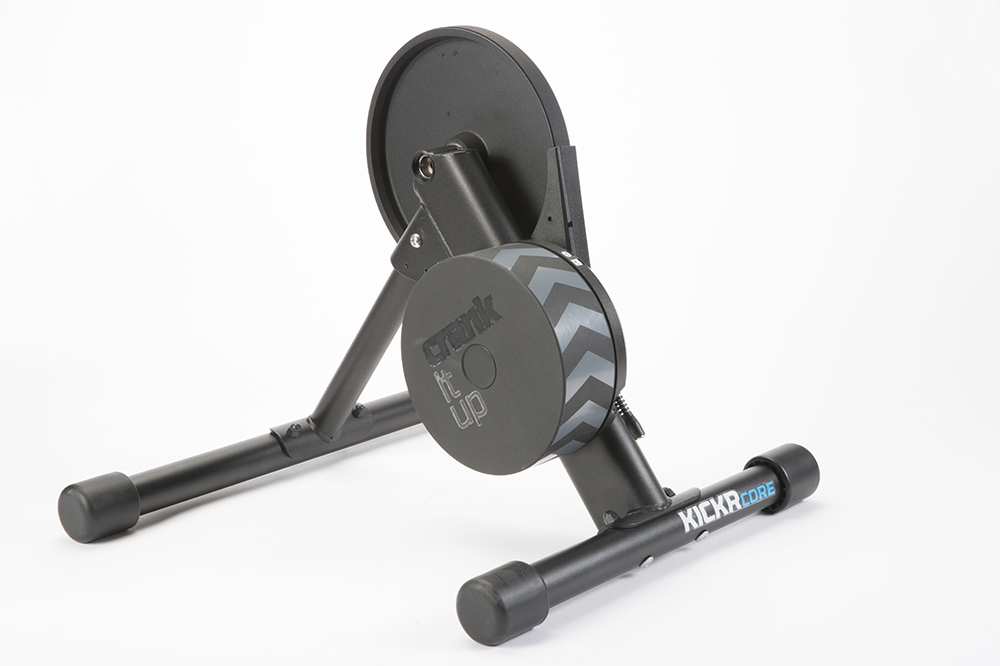Wahoo Kickr Core smart trainer review
Wahoo wants to own the indoor training expeierence and so has added a middle ground with the Wahoo Kickr Core for those that want smart capabilities without the price tag

Is the Core as practical as the top-end Kickr? The short answer is no. The Core is a good trainer, with decent enough road feel but the bigger flywheel is probably worth the extra investment if you can stretch to it.
-
+
Price
-
+
Smart capabilities
-
-
Slow at responding to resistance change
You can trust Cycling Weekly.
The new Wahoo Kickr Core is a stripped down version of the brand’s top-end Kickr trainer, designed to provide all the basic functions of the original but for £300 less. We loved the first and second generation of the Kickr, so we’re hoping this budget-friendly offering won’t disappoint.
>>> Best turbo trainers for this winter
Out of the box the Core is a very compact unit, it does require you to bolt the legs on but you only need do it once — after each training session they simply fold down to reduce the storage space required when you’re not using it. The Core comes with a 12lb flywheel, which makes the unit relatively easy to lug about (the Kickr has a 16lb wheel), although it does compromise the performance slightly, something we’ll get onto in a minute.
Turn the Core on and it’ll quickly synch with your phone and to a variety of other units via ANT+, Bluetooth or FE-C. I hooked the trainer up to an Android phone and the interface proved easy to navigate and to calibrate with your bike.
>>> Cheap indoor fitness app set up

The Core’s ace up its sleeve here is that it’s open source, meaning you can connect it to pretty much anything you like — third party apps like Garmin and Zwift, or power meters like the Vector. And of course it’ll also link to Wahoo’s own bolt-on hard wear products, like its indoor grade simulator, the Climb, and Wahoo’s fan called the Headwind.
In use the Wahoo Kickr Core feels pretty realistic, just like the Kickr it’s virtually silent and the only sound you’re likely to hear is from your drivetrain.
I spent zero time adjusting the gears to get silent running because I cannibalised the cassette straight off my bike and onto the Wahoo Kickr Core — one advantage from the fact the trainer doesn’t come with a cassette. In day-to-day use this isn’t practical of course, unless you have a dedicated training bike, so you need to factor in the extra £50 to the unit’s cost. At least you’re guaranteed to get the right gearing setup to mirror your regular bike.
Trying to set the Kickr Core up on most mountain bikes is difficult though, despite the allowance for 12x142 or 12x148 Thru Axles, and 29er or 27.5in wheel sizes. That’s because the unit isn’t compatible with SRAM XD driver bodies, something almost all modern mountain bikes over £1,000 now come with.
However, Wahoo does say that the Kickr Core is fully compatible with 12-speed mountain bikes by utilising specially designed cassettes that fit on standard Shimano freehubs, like the SRAM NX Eagle cassette or the Sunrace MZ 12-speed cassette - so watch out for that if buying.
With a Shimano cassette on, the Wahoo Kickr Core is stable in use, putting in a hard effort doesn’t produce excessive rocking even if you set it up outside on soft ground. Riding the Kickr does feel like a relatively truthful recreation of riding, but there was always a slight feeling that something isn’t quite right.
Jump on and turn the pedals over you’re met with firm resistance, as you should. But that initial inertia seems to drop away slightly as momentum builds and before the unit can add more resistance to make it feel realistic.
This hard, soft, hard feel makes me think the unit doesn’t quite respond in time to your efforts, something that could probably be cured with a heavier flywheel to maintain its momentum… something the £999 Kickr has.

Thank you for reading 20 articles this month* Join now for unlimited access
Enjoy your first month for just £1 / $1 / €1
*Read 5 free articles per month without a subscription

Join now for unlimited access
Try first month for just £1 / $1 / €1
Get The Leadout Newsletter
The latest race content, interviews, features, reviews and expert buying guides, direct to your inbox!
Symon Lewis joined Cycling Weekly as an Editorial Assistant in 2010, he went on to become a Tech Writer in 2014 before being promoted to Tech Editor in 2015 before taking on a role managing Video and Tech in 2019. Lewis discovered cycling via Herne Hill Velodrome, where he was renowned for his prolific performances, and spent two years as a coach at the South London velodrome.
-
 The thing that bothers me most when I look back at old school training is that right now we’re doing something equivalently misguided
The thing that bothers me most when I look back at old school training is that right now we’re doing something equivalently misguidedOur columnist's old training diaries reveal old-school levels of lunacy
By Michael Hutchinson Published
-
 'This race is absolutely disgusting': Peloton reacts to another brutal Paris-Roubaix Femmes
'This race is absolutely disgusting': Peloton reacts to another brutal Paris-Roubaix FemmesNow in its fifth edition, Paris-Roubaix Femmes is still a tough race, even for the best bike riders in the world
By Adam Becket Published
-
 ‘It’s the biggest win of my career’ says João Almeida after crushing Itzulia Basque Country success
‘It’s the biggest win of my career’ says João Almeida after crushing Itzulia Basque Country successUAE rider wins the final stage to finish almost two minutes clear of Enric Mas on GC, with Max Schachmann in third
By Peter Cossins Published